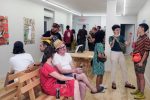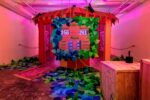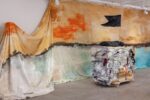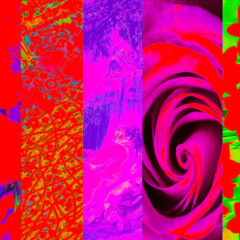In our modern day, the personal is becoming intertwined with the technological. Handheld gadgets—objects of the twenty-first century’s own kind of industrial revolution—connect us across our unique identities through social media and other messaging platforms. Much of contemporary art, in turn, is responding to this cultural phenomenon. Artists make their art more socially provocative so they, like technology, can also have social impact.
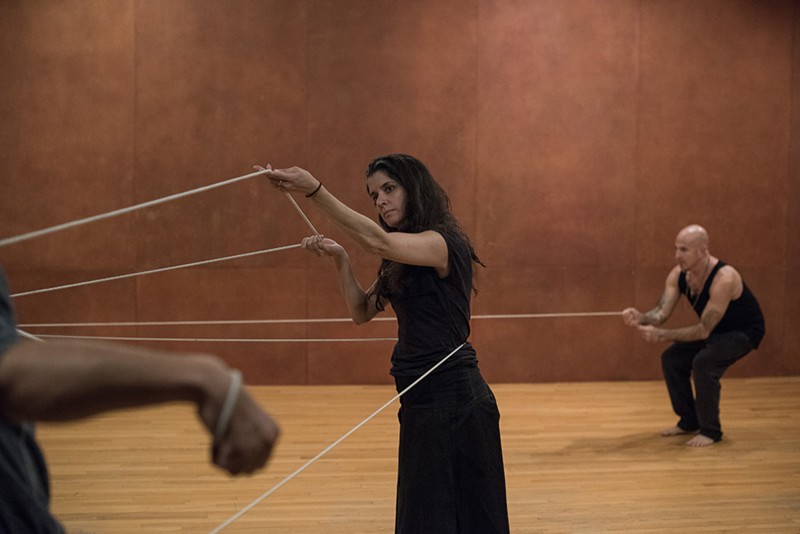
An apt model is Ally, a collaborative series of performances at the Fabric Workshop and Museum opening on April 21, led by artist Janine Antoni (b. 1964) in collaboration with two preeminent choreographers Stephen Petronio (b. 1956) and founding postmodernist Anna Halprin (b. 1920)—all of whom are in residence at the FWM.
Guarded play, group performance
I visited and previewed “Rope Dance,” one of the three performances of Ally. It surprised me with its intentional involvement of the audience, who touch the rope and each other, body to body. The performance begins as Petronio lays out a rope on the dance floor for Antoni to follow, blindfolded, with her bare feet. Petronio and Antoni then shoulder-tap and loop audience members in with the rope—pulling it, stretching it, and releasing it in an improvised dance.
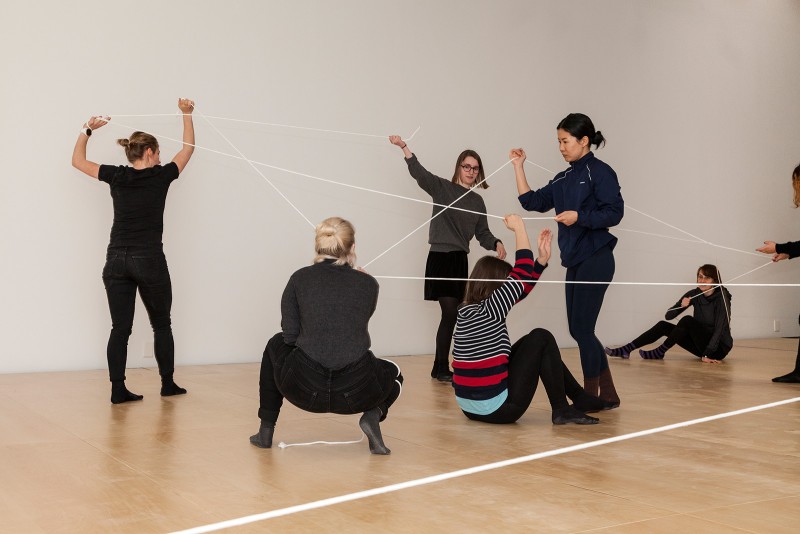
Led by Petronio’s directions—“Higher!”, “Lower!”, “Taut!”, “Loose!”, “Free play!”—the resulting kinetic web is simple its linear rope construction but complex in the power dynamics it explores. Petronio’s directions are ambiguous enough to remain open to personal interpretation, allowing one individual to respond differently from the next.
Between and among the bodies, repeated patterns emerge and tensions twist. Each human interaction—which depends on the particular people attending—can be analyzed in terms of the submission and dominance of the players.
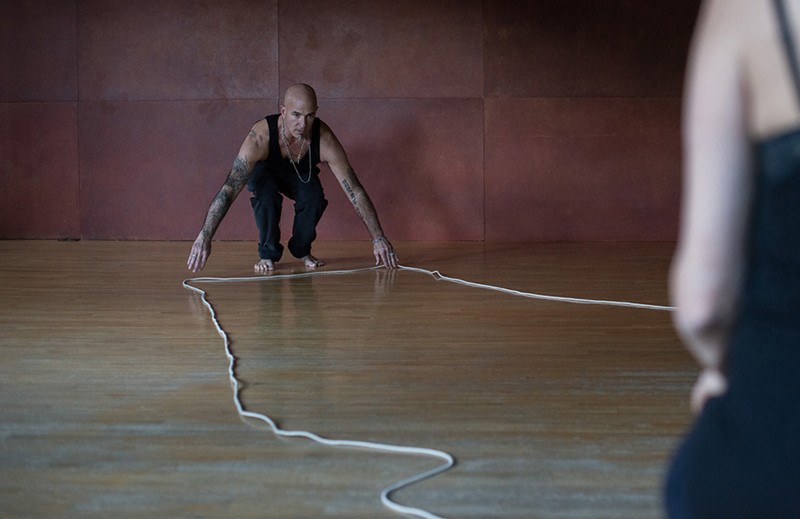
Antoni, Petronio, and Halprin are curators of energy in “Rope Dance.” We are turned “on” to our social interactions, directed and guided by these curators. A girl tugs at her skirt to remain conscious that she does not flash; a young man avoids the spotlight in the center and pushes back his glasses from the bridge of his nose. At one part in the performance, I fumbled with the rope and sat down on the side, opting out of the charged struggle.
This guarded play of “Rope Dance” makes a visitor watch for rare sightings of vulnerability that a more staged performance is better at hiding. Its improvisation and poeticism are intriguing, but the FWM’s institutional role to uphold the safety of visitors does not allow for complete uninhibited interaction—which might have been more interesting.
Dance across generations
“Rope Dance” ends with a duel of pulled rope between two remaining participants until one gives in. Antoni and Petronio then project a stunningly dramatic black-and-white video portrait of Anna Halprin on the wall behind the performance floor, which creates a grandmotherly effect. Her lips tremble as if she knows of the tension, destruction, and heartbreak that the interwoven rope symbolizes for humanity. She can only watch.
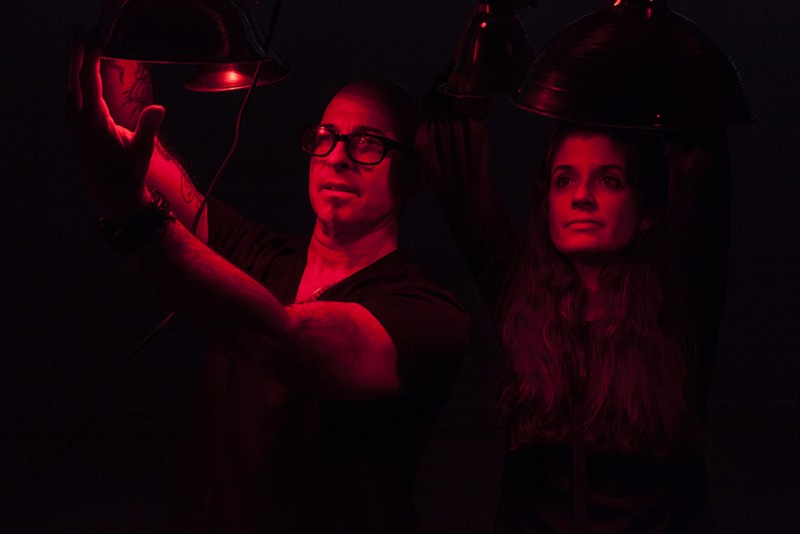
The degree of Halprin’s effect on Antoni and Petronio will be unveiled between April 21 and July 31, 2016, when the project ends. The cross-generational experiment was already fertile when I saw it. I asked Antoni in her artist’s talk at PennDesign on March 15 how this alliance has transformed her trajectory so far, and she noted the challenges that come with demolishing constraints she previously applied to her own work. New to dance, she must “play to process” and trust her instincts.
“As an artist, my ability to float in a space of unknowing for a really long time is the best creative exercise,” she explained, “because it’s easy to let fear set in and to go back to things I know—which is totally the opposite reason of why I’m collaborating.”
Antoni, Petronio, and Halprin’s acts of boundary-pushing and mistake-making create enticing experimental entryways. Inspired by these leaders and their legacies, more artists and audiences will likely continue to intertwine in their shared spaces and experiences.
Ally is on view through July 31, 2016 in the Fabric Workshop and Museum. Collaborative works will occupy four floors of the museum, combining installed environments, sculptures, and performances. All performances are free, but reservations are recommended due to seating limitations.
Gina DeCagna is an artist and writer. She is the Editor-in-Chief and Director of Symbiosis, an organization and publication dedicated to the interrelationship of the visual and literary arts founded at the University of Pennsylvania in 2012.


